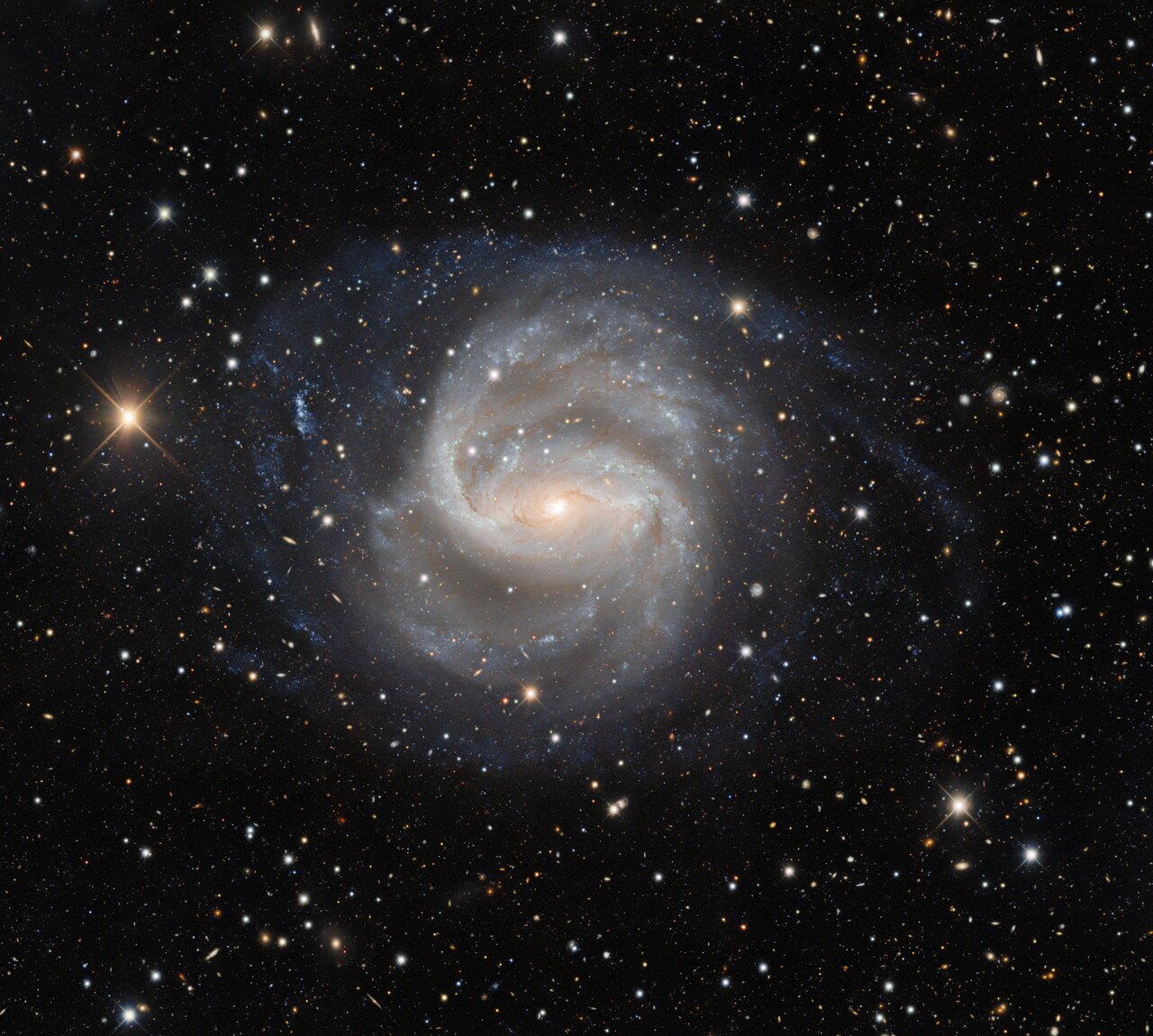Cosmos NGC 1672
The arms of the barred spiral galaxy NGC 1672 sweep across this Image of the Week, captured by the Víctor M. Blanco 4-meter Telescope at Cerro Tololo Inter-American Observatory (CTIO), a Program of NSF’s NOIRLab. NGC 1672 is something of a celestial mystery, as it is difficult to define its galactic activity. The nucleus is surrounded by a ring of hot gas filled with individual point sources of X-ray light, in other words bright, newly formed stars. However, the luminous nucleus of NGC 1672 itself shines brightly in various types of light from X-ray to infrared. Known as a Seyfert Type 2 nucleus, it’s an example of a specific type of active galactic nucleus (AGN) and likely a supermassive black hole. Fragile young stars and a destructive AGN shouldn’t necessarily be so close together, and their proximity in this galaxy creates a conundrum. Galaxies like NGC 1672 can open up new pathways to understanding the activities and behaviors of galaxies, and in turn be pieced together to discern the long-term evolution of galaxies.
Data for this image were collected using the Dark Energy Camera on the Víctor M. Blanco 4-meter Telescope for the Dark Energy Survey, which mapped millions of galaxies to determine the nature of dark energy. The analysis of data from the Dark Energy Survey is supported by the Department of Energy and the National Science Foundation, and the Dark Energy Camera science archive is curated by the Community Science and Data Center at NOIRLab.
